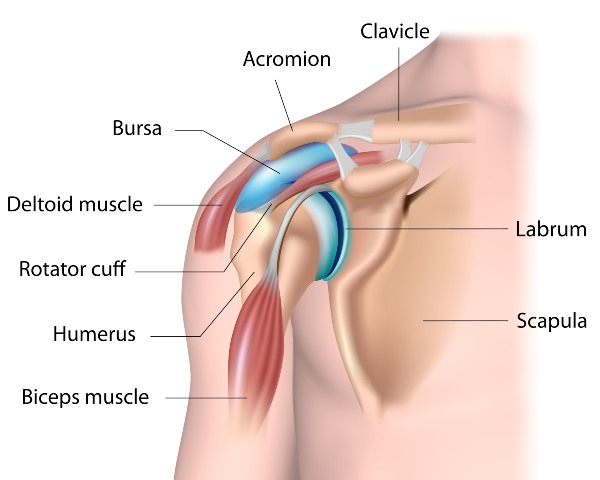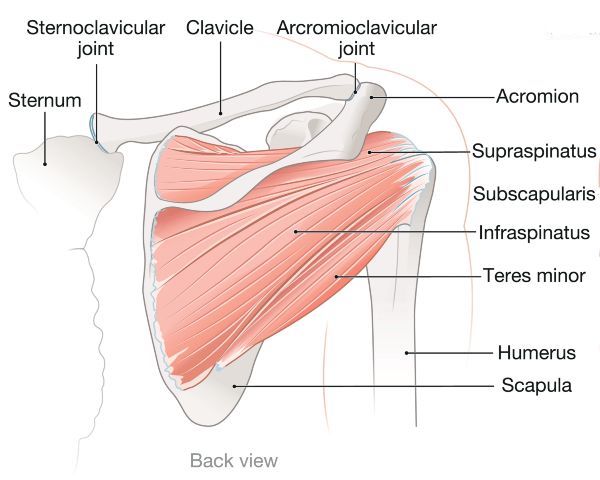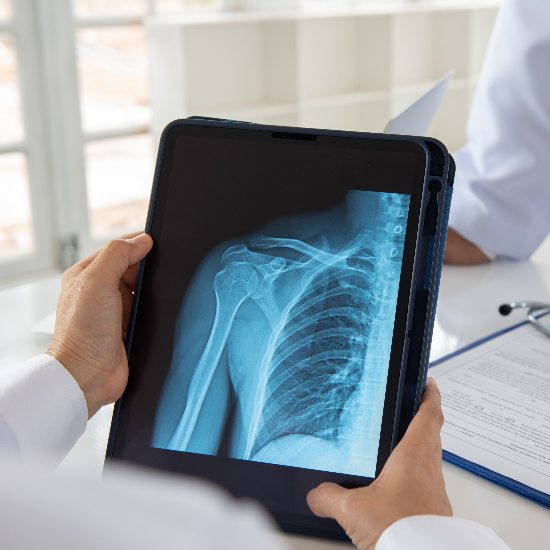FROZEN SHOULDER TREATMENT
MELBOURNE
SHOULDER JOINT ANATOMY
What are the joints, muscles and ligaments in your shoulder?
The shoulder is made up of three bones:
(1) The Scapula (shoulder blade), (2) Clavicle (collarbone) and; (3) Humerus (upper arm bone)
The shoulder joint is formed where the humerus (upper arm bone) fits into the scapula (shoulder blade), like a ball and socket.
Other important shoulder bones include:
The acromion – The bony projection off the scapula.
The clavicle (collarbone) – This meets the acromion in the acromioclavicular joint.
The coracoid process – The hook-like bony projection from the scapula.
The shoulder has several other important structures including:
The bursa – A small sac of fluid that cushions and protects the tendons of the rotator cuff.
The rotator cuff – A collection of muscles and tendons that surround the shoulder, giving it support and allowing a wide range of motion.
The labrum – A cuff of cartilage that forms a lip for the ball-like head of the humerus to fit into the socket.
The humerus fits relatively loosely into the shoulder joint, allowing the shoulder a wide range of motion.
Shoulder Anatomy


Figure 1
DIAGNOSING FROZEN SHOULDER
To correctly diagnose frozen shoulder it is important to rule out other potential problems such as rotator cuff tears or shoulder joint arthritis.
Dr Pullen will thoroughly discuss your history and undertake a clinical examination of your shoulder. He will ask you to move your arm in certain directions to check your range of motion (active movement) and ask you to relax your shoulder whilst he manipulates the movement (passive movement). Frozen shoulder affects both active and passive range of motion.
In some cases patients may benefit from having additional imaging tests to rule out other problems. Imaging tests may include:

POTENTIAL COMPLICATIONS
The surgery complications which may occur after frozen shoulder surgery include:
- Shoulder stiffness
- Restricted movement
- Infection
- Numbness or tingling around the shoulder.
Dr Pullen will discuss with you in detail the potential complications and risks in relation to the surgical and non-surgical approaches.
Proud member of Royal Australasian College of Surgeons and Australian Orthopaedic Association.


Frozen Shoulder Surgery Melbourne
Dr Pullen treats patients from all over Victoria in relation to shoulder injuries. He consults with patients at the following practice locations in Melbourne including East Melbourne and Ringwood.


